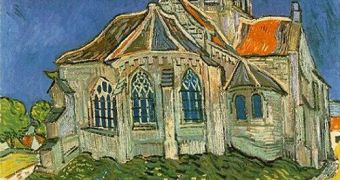Scientists at the Tilburg University in the Netherlands, led by expert Igor Berezhnoy, have managed to create a new and revolutionary computer program that is capable of recognizing an authentic van Gogh painting from a forged one, AlphaGalileo reports. This is made possible by special mathematic algorithms devised at the university, which allow for the painter's characteristic brush work and use of color to be identified even in unsigned works. The new program is not meant to work stand-alone, but to support art historians and other experts in their visual assessment of paintings.
While artificial intelligence has been around for some time in many fields of research, it has only recently began to take hold of art. Over recent years, more and more computer algorithms related to the various aspects of art analysis have been developed, and the new ones are just the latest in a now-long row. In the experiments, Berezhnoy looked closely at how the color-analysis computer program could identify the defining traits of a painter's brush work by simply scanning a digital reproduction of the work. The expert found that the equations were extremely well adapted to doing just that.
In the course of its work, the group was supported closely by the Van Gogh Museum and the Kroller-Muller Museum, it says. Keeping in mind historical facts about van Gogh, the team leader proposed the implementation of a new type of analysis program, called Method for the Extraction of Complementary Colors. It is a well known fact that, while in France, Vincent van Gogh adopted a new color technique, which saw him emphasizing various contours using complementary colors, such as blue next to yellow. The new digital analysis method now allows experts to find general color patterns in the overall work that the famous painter did over the course of his lifetime.
The method's main advantage is that it works in a completely objective manner, and it therefore allows analysts to accurately determine the authenticity of a certain piece of artwork. Berezhnoy and his team also developed the Prevailing Orientation Extraction Technique, which allows experts to detect the initial orientation and direction of the brush strokes the painter made. This helps create a “fingerprint” of the respective master. Naturally, the method can be extended to cover other painters as well.

 14 DAY TRIAL //
14 DAY TRIAL //